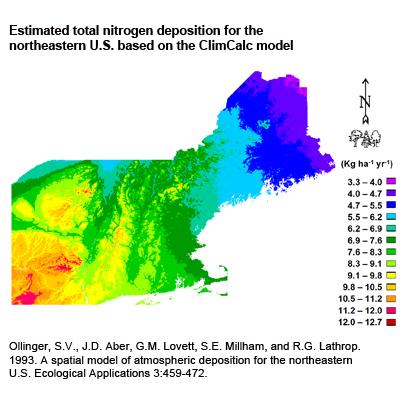Northern Forest Ecosystem Response to Environmental Change: Regional Collaboration and Database Development

The Northern Forest region, like other parts of the globe, is being affected by numerous, interacting vectors of environmental change, including "acid" deposition, nitrogen saturation, elevated mercury deposition, soil nutrient depletion, and global climate change. These issues have been the subject of intense scientific scrutiny over the past several decades and much has been learned about the response of northern forest and aquatic ecosystems to these disturbances.
NSRC scientists have embarked on an unprecedented collaborative effort to increase communication, share data, and synthesize existing accumulating research on response of northern forest and aquatic ecosystems to environmental change and establish new multi-site, regional studies to address several of these issues. It is hoped that new insights on the response of northern forests to multiple, interacting vectors of change can be gleaned by facilitating better communication and information exchange between research groups and merging their respective datasets.
Participants have compiled a researcher-accessible database, which includes data, summary statistics, graphs, and regional maps for surface water, soil, and vegetation chemistry and regional maps of nitrogen, sulfur, and mercury deposition and climate, soil, and landscape characteristics. For example, compiled data show that surface water, foliage, and soil nitrogen tend to decrease from west to east, soil nitrogen increases with increasing latitude and elevation, and nitrogen in foliage increases with increasing elevation. This effort not only will enhance communication and collaboration among participating scientists but also in the future will make data and information available to the broader community of scientists, land managers, policy makers, and educators in the region.
